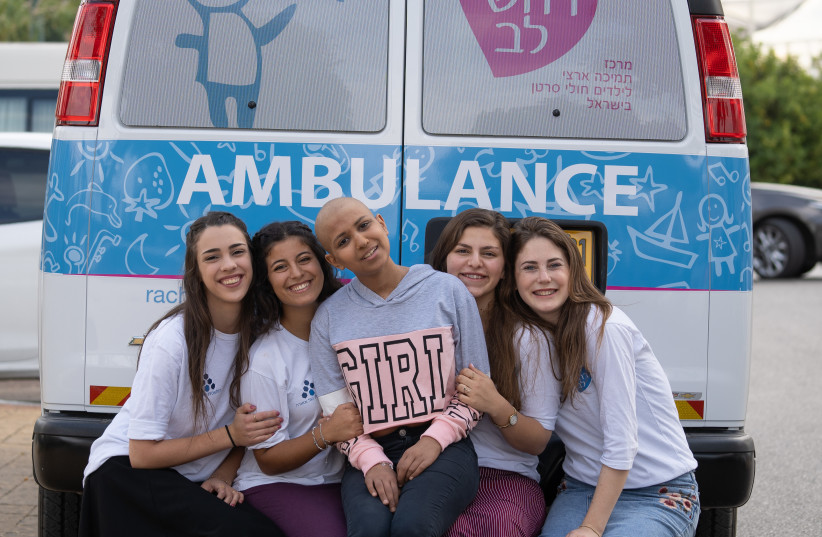On Monday night, with God’s help, after evening prayers, all the people of Israel throughout the world will gather around their holiday tables, celebrating the Jewish New Year and praying for a happy and sweet new year for Jews everywhere.
Of course, families will commence the meal with the important tradition from Jewish literary sources that has been closely preserved and practiced for many years – to highlight and experience the meaningfulness of the symbols of Rosh Hashanah. The first symbol is the apple, which people slice and dip in honey and ask to be deserving and blessed and to bless others with a good, sweet year. The pomegranate, known to contain the most seeds of any fruit, is shared, as family members and friends wish that each other’s merits will be as plentiful as the pomegranate's seeds. And we continue the meal introduction, focusing our attention on more symbols such as dates and beets.
Some ask why people invest so much time and effort in these popular symbols. After all, Rosh Hashanah is a day of prayer and fulfilling the mitzvah of listening intently to the sound of the shofar (ram’s horn) being blown. They want to know: What is the purpose of engaging so heavily in these symbols? After all, if we want to bless others with a happy new year, we can express our wishes one to another without the apples and with no need for honey.
We do not need pomegranate seeds to convey our sentiments. So why do we traditionally use these fruits and vegetables as symbols to wish people a happy and prosperous new year on the first night of the holiday? The answer is precisely because on the first night of the year, we all want to start off with a very important message. And this message is that the symbols are not marginal – they are at central essential messages for the Jewish people who are known for their generosity, giving and commitment to one another.
Using these symbols, we want to place special emphasis – to pay special attention to them as a way to communicate – when we go to work and when we greet our neighbors and loved ones – our spouse, sons and daughters. We want to always pay attention, for example, if someone is sad, to ask why they are sad; if someone is hurting – we should find out how to help them and reduce their pain and their burden. If someone does not look good or appears depressed, or if suddenly someone does not attend a routine activity, we should pick up the phone and ask how they are and find out whether they need assistance.
In the end, this outreach is the beauty of the Jewish people. If we pay attention to these symbols at the onset, before situations become serious or cross a line in which a person collapses or reaches a point where they cannot go on – moments before they raise the white flag of despair and surrender – we can make a true difference. If we pay attention to the symbols, we can be better people – with more helpful compassion toward our friends and family members – members of our nation – so we will all have a better and less burdensome future, and certainly, a sweeter year.
I told a story at our holiday toast to dozens of the Rachashei Lev volunteers who care for children who are sick with cancer. The story’s ending was a significant symbol that exemplifies the importance of these Rosh Hashanah symbols. The other day, I visited the oncology units at Sheba Medical Center in Tel Hashomer with the medical staff to make sure that all the holiday preparations were ready – making sure that each child had a bed to sleep in, that family members had places to stay and food to eat for the holiday.
Suddenly, a young teenager, aged fourteen-and-a-half who has been combating cancer for over six months, pulled me aside and whispered in my ear that in room 16, a young mother had just arrived at the unit with her baby who is sick with cancer. The teen wondered whether this family needed help, and chances were that I had not met them because they had only arrived that morning. The teen pointed to the room and said, “Perhaps you can visit that room and ask whether they need anything.” This action by this gem of a child, despite being so involved with the difficulties of his own treatment, paid close attention to the signs of others.
So, of course, healthy people like us can certainly pay attention to the signs and symbols of others close to us that we perhaps have not noticed until now.
Actually, together, we can pay attention to the symbols – to notice people around us, to understand what they need and how we can help them. And thus, we will be blessed with a happy and sweet new year – with all the significance of sweetness – a year of health and fulfillment, of calmness and peacefulness and of a happy heart, wearing a sincere smile on our face. This will lift up our lives, the lives of the children who are ill with cancer, and the lives of all whom we meet along the way.
Let us pray and wish from the bottom of our hearts for our loved ones and for all the Jewish people to have a happy and sweet new year with many positive outcomes. Best wishes for a happy holiday!
The writer is the CEO of Rachashei Lev, The Support Center for Children with Cancer in Israel

